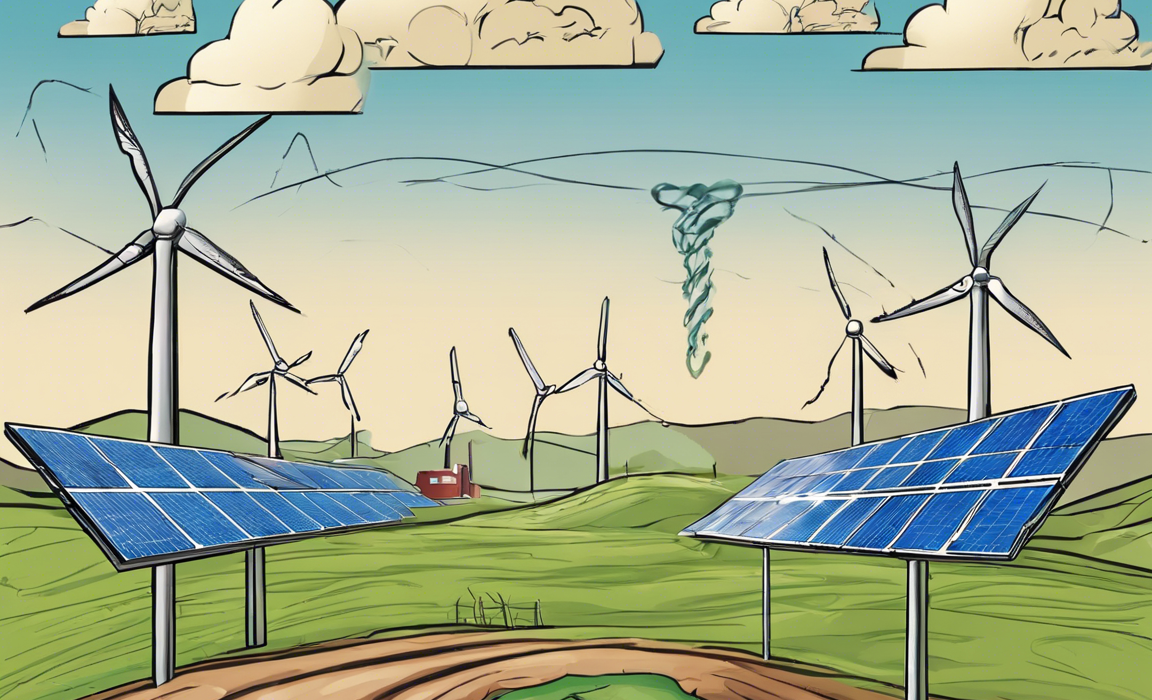As the world continues to face environmental challenges, the importance of transitioning to renewable energy sources becomes increasingly evident. Renewable energy refers to sources of energy that are naturally replenished on a human timescale, such as solar, wind, hydroelectric, geothermal, and biomass energy. These sources offer numerous benefits compared to traditional fossil fuels, including lower greenhouse gas emissions, improved air quality, and energy security. This article aims to provide a comprehensive overview of the various renewable energy sources, their advantages, limitations, and their role in shaping the future of the energy sector.
Solar Energy:
Solar energy is derived from the sun’s radiation and can be converted into electricity or used for heating purposes through solar photovoltaic (PV) panels and solar thermal systems. Some key advantages of solar energy include:
- Abundance: The sun is an essentially limitless source of energy.
- Sustainability: Solar energy produces no greenhouse gas emissions during operation.
- Versatility: Solar panels can be installed on rooftops, in open fields, or integrated into building facades.
Despite these benefits, solar energy generation can be intermittent due to weather conditions, and the initial installation costs can be high. However, advancements in technology and falling prices are making solar energy increasingly competitive in the energy market.
Wind Energy:
Wind energy is harnessed by capturing the kinetic energy of wind through wind turbines that convert it into electricity. Key advantages of wind energy include:
- Clean energy: Wind power produces no air or water pollution.
- Cost-effectiveness: Once installed, wind farms have low operating costs.
- Scalability: Wind turbines can range from small-scale installations to offshore wind farms.
Challenges of wind energy include its intermittent nature and potential impact on wildlife and landscapes. However, ongoing research aims to address these issues and optimize wind energy production.
Hydroelectric Energy:
Hydroelectric power is generated by capturing the energy of flowing water, typically through the use of dams and turbines. Some advantages of hydroelectric energy are:
- Reliability: Hydroelectric plants can provide constant electricity supply.
- Energy storage: Water reservoirs can store energy for peak demand periods.
- Long lifespan: Hydroelectric infrastructure is durable and can last for decades.
However, hydroelectric projects can have significant environmental impacts, such as habitat disruption and altered water flow patterns. Newer technologies like run-of-the-river hydroelectricity aim to mitigate these effects and expand the use of this renewable energy source.
Geothermal Energy:
Geothermal energy utilizes heat from the Earth’s core for electricity generation and heating applications. Advantages of geothermal energy include:
- Renewable and reliable: Geothermal resources are continuously replenished.
- Low emissions: Geothermal power plants emit minimal greenhouse gases.
- Energy efficiency: Geothermal heating and cooling systems can be highly efficient.
One limitation of geothermal energy is its location-specific nature, as viable resources are often located in geologically active regions. Nevertheless, advancements in enhanced geothermal systems hold promise for expanding geothermal energy production to new areas.
Biomass Energy:
Biomass energy is derived from organic materials such as wood, crop residues, and municipal solid waste. It can be converted into biofuels, biogas, or used directly for heating. Key advantages of biomass energy include:
- Waste reduction: Biomass energy can utilize organic waste that would otherwise decompose and release methane.
- Energy security: Biomass resources can be locally produced, reducing dependence on foreign energy sources.
- Carbon neutrality: When managed sustainably, biomass energy does not contribute to net carbon emissions.
However, the combustion of biomass can release air pollutants if not properly controlled, highlighting the importance of efficient biomass combustion technologies and sustainable sourcing practices.
Integration and Future Outlook:
While each renewable energy source has unique characteristics and benefits, their integration into the existing energy grid presents challenges such as intermittency, grid stability, and storage needs. Energy storage technologies like batteries, pumped hydro storage, and hydrogen systems play a crucial role in enabling higher shares of renewable energy in the grid by storing excess energy for times of high demand.
The future of energy generation is increasingly leaning towards a mix of renewable energy sources to meet growing global energy demands while reducing carbon emissions. Policies supporting renewable energy deployment, technological innovations, and public awareness are all driving forces behind this transition. As the costs of renewable energy technologies continue to decline and their efficiency increases, they are poised to become the backbone of the energy sector in the coming decades.
Frequently Asked Questions (FAQs):
1. What are the main benefits of switching to renewable energy sources?
Switching to renewable energy sources offers numerous benefits, including reduced greenhouse gas emissions, improved air quality, energy security, and sustainable development.
2. Are renewable energy sources cost-effective compared to traditional fossil fuels?
While the initial costs of renewable energy installations can be higher, the long-term operational costs are often lower due to the abundance and sustainability of renewable resources.
3. How can intermittent renewable energy sources like solar and wind be integrated into the grid effectively?
Integrating intermittent renewable energy sources requires advanced grid management systems, energy storage solutions, and flexible demand-side measures to ensure a stable and reliable electricity supply.
4. What role do policies play in promoting the adoption of renewable energy sources?
Government policies such as renewable energy targets, feed-in tariffs, tax incentives, and carbon pricing mechanisms are essential in driving investments in renewable energy infrastructure and fostering market competitiveness.
5. Are renewable energy sources capable of meeting the world’s energy demands entirely?
While no single renewable energy source can meet all energy demands, a combination of wind, solar, hydroelectric, geothermal, and biomass energy can collectively provide a sustainable and secure energy supply for the future.
6. What are some emerging trends in renewable energy technology?
Emerging trends in renewable energy technology include enhanced energy storage solutions, advanced materials for solar panels, offshore wind farm development, and the integration of artificial intelligence in energy management systems.
7. How can individuals contribute to the transition to renewable energy?
Individuals can support the transition to renewable energy by installing rooftop solar panels, opting for electric vehicles, reducing energy consumption, and advocating for renewable energy policies at the local and national levels.
8. What are some potential environmental impacts of renewable energy technologies?
While renewable energy sources are generally cleaner than fossil fuels, they can still have localized environmental impacts such as land use changes, wildlife disturbance, water consumption, and material resource requirements.
9. How can developing countries benefit from renewable energy adoption?
Developing countries can benefit from renewable energy adoption by enhancing energy access, reducing energy poverty, creating local job opportunities, and minimizing reliance on expensive imported fossil fuels.
10. What innovations are driving the future of renewable energy?
Innovations such as floating solar farms, vertical axis wind turbines, smart grids, blockchain-based energy trading, and decentralized energy systems are shaping the future of renewable energy and transforming the global energy landscape.
In conclusion, the widespread adoption of renewable energy sources is essential for mitigating climate change, reducing dependence on finite fossil fuels, and fostering a sustainable energy future for generations to come. By understanding the characteristics, benefits, limitations, and future trends of solar, wind, hydroelectric, geothermal, and biomass energy, stakeholders can make informed decisions to accelerate the transition towards a clean, efficient, and resilient energy system.


